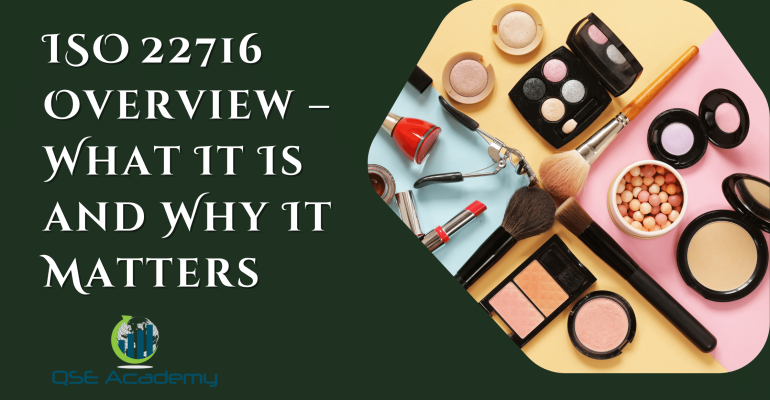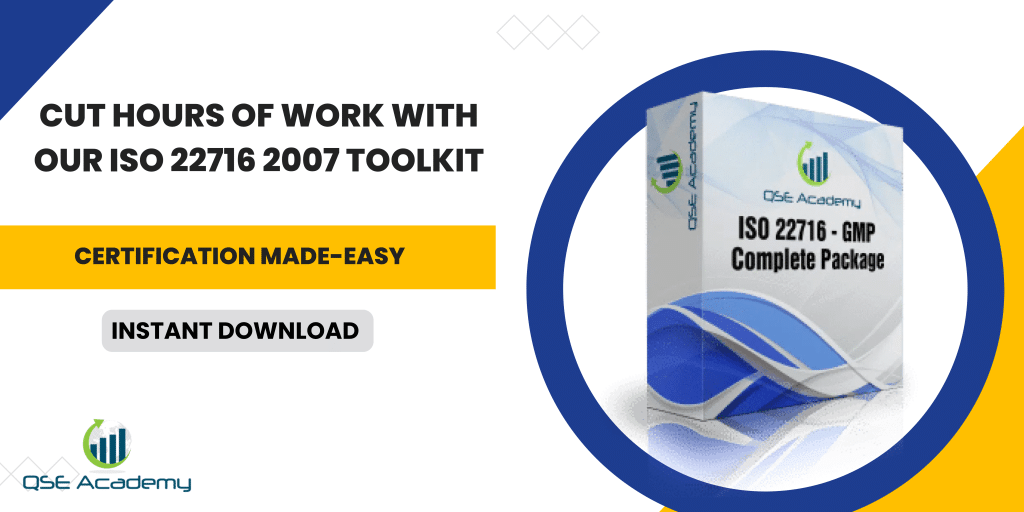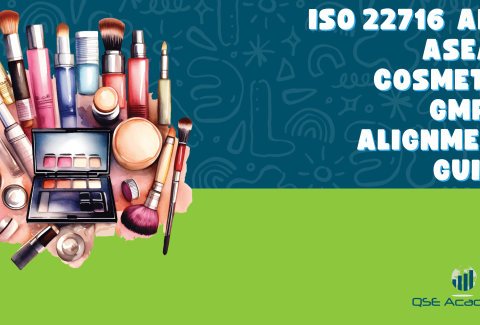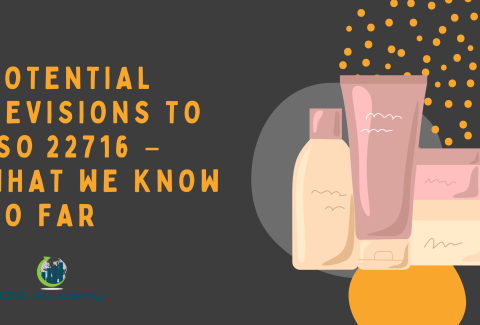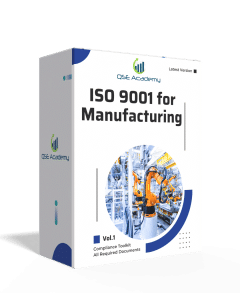ISO 22716 Overview – What It Is and Why It Matters
Last Updated on October 24, 2025 by Hafsa J.
Why Cosmetic Manufacturers Keep Talking About ISO 22716
If you work in cosmetics, you’ve probably heard the term ISO 22716 more times than you can count. It shows up in supplier audits, EU regulations, and client requirements — and yet, many people still aren’t sure what it actually means or why it matters so much.
ISO 22716 isn’t just another certification to hang on the wall. It’s the international guide for Good Manufacturing Practice (GMP) in cosmetics — the framework that ensures every product you make is safe, consistent, and traceable. Whether you’re manufacturing skincare, perfumes, or hair care products, this standard defines the way professional cosmetic production should operate.
This article gives you the complete overview — what ISO 22716 is, how it connects to EU Regulation 1223/2009, who needs to comply, and why following it can transform your operations from reactive to reliable. It’s written for manufacturers, private-label brands, importers, and quality teams who want to understand the real purpose behind GMP — and how ISO 22716 turns it into action.
By the end, you’ll have a clear, practical understanding of what ISO 22716 covers, why regulators trust it, and how it helps your business meet both quality and market expectations.
What Is ISO 22716? – The Global Language of Cosmetic GMP
ISO 22716 is the international guideline for Good Manufacturing Practice (GMP) in the cosmetics industry. It provides a structured framework that ensures every cosmetic product is produced under controlled, hygienic, and traceable conditions — from raw material receipt to final shipment.
The standard was developed by the International Organization for Standardization (ISO) to give cosmetic companies a unified set of manufacturing principles. It doesn’t reinvent the wheel; instead, it formalizes what quality-driven manufacturers should already be doing: maintaining clean facilities, training competent staff, keeping proper documentation, and controlling every stage of production.
It’s recognized worldwide, but it’s especially critical in the European Union. Under EU Regulation 1223/2009, Article 8 requires cosmetics to be manufactured according to GMP. ISO 22716 is the reference guide regulators use to verify that requirement. In short, while certification is voluntary, compliance with its principles is not.
The beauty of ISO 22716 is that it’s adaptable — it applies equally to large factories, contract manufacturers, and small-batch producers. The focus isn’t on the size of your business, but on how effectively you manage cleanliness, safety, and process consistency.
By adopting ISO 22716, you’re speaking a language that every regulator, buyer, and auditor understands — one that says your products are made safely, systematically, and professionally.
Why It Matters – Beyond Certificates and Audits
For many cosmetic manufacturers, ISO 22716 starts as a compliance project — something to satisfy clients or meet EU regulations. But once it’s implemented properly, it becomes so much more than that. It’s the foundation of how you build a reliable, efficient, and trustworthy operation.
At its core, ISO 22716 is about control — control over your ingredients, your environment, your people, and your processes. When those elements work in harmony, you eliminate the biggest risks in production: contamination, mix-ups, and inconsistency. The result is a smoother workflow, fewer reworks, and safer products for your customers.
Another reason it matters? Credibility.
Following ISO 22716 tells partners, retailers, and regulators that your business operates under internationally recognized best practices. It builds trust before they even step into your facility.
Pro tip: Treat ISO 22716 as a business improvement system, not just a compliance requirement. The better your process control and documentation, the fewer surprises you’ll face — whether during an audit or a busy production season.
ISO 22716 doesn’t just make your products safer; it makes your business stronger.
Who Needs ISO 22716 Compliance
If your company touches a cosmetic product at any point in its journey — from formulation to filling to export — ISO 22716 applies to you. It’s not just for large factories or multinational brands; the standard was designed to fit organizations of all sizes and setups.
Here’s who needs to follow ISO 22716 in practice:
-
Manufacturers and Contract Producers: The ones actually making, filling, or labeling the product. They must ensure hygiene, consistency, and traceability at every stage.
-
Private-Label and Brand Owners: Even if you outsource production, you’re still legally responsible for ensuring your suppliers meet GMP standards.
-
Importers and Distributors: In the EU, you can’t market or sell a product unless it’s made according to GMP — and you may need to prove it during inspections.
-
Small-Batch and Artisan Producers: Regulations don’t exempt small businesses. Whether you’re blending soaps or skincare in small volumes, you still need controlled processes and proper documentation.
Pro tip: ISO 22716 scales easily. You don’t need a huge facility or complex systems — just a clean environment, defined procedures, and good recordkeeping. The goal is the same for everyone: consistent, safe, and compliant cosmetics.
Whether you’re producing for yourself or on behalf of others, ISO 22716 compliance shows you’re not just making products — you’re manufacturing them professionally.
Key Benefits for Manufacturers
Once implemented properly, ISO 22716 becomes much more than a checklist — it’s a performance booster. It streamlines how you work, builds customer confidence, and strengthens your brand’s reputation across every level of your operation.
Here’s what manufacturers typically gain:
-
Better Process Control: Clear SOPs, clean environments, and defined responsibilities mean fewer errors and less rework.
-
Consistent Product Quality: Every batch meets the same standards, no matter who’s on the line or how big the order is.
-
Easier Market Access: ISO 22716 is recognized by regulators and retailers worldwide. It speeds up EU product approvals and helps you enter new markets with confidence.
-
Improved Efficiency: Preventive maintenance and structured documentation reduce downtime and confusion.
-
Enhanced Brand Trust: Certification or documented compliance sends a clear message — your company prioritizes safety and professionalism.
One of my clients, a mid-sized skincare brand, discovered that after adopting ISO 22716, their production errors dropped by almost half — and their biggest retail client expanded their contract. They hadn’t changed their product line; they just improved how they worked.
Pro tip: Use ISO 22716 as a growth tool, not a hurdle. The same system that helps you pass an audit can also help you scale faster and maintain consistency across multiple sites or product lines.
ISO 22716 in Action – What the Standard Covers
To understand how ISO 22716 works day to day, it helps to see what it actually includes. The standard isn’t just about paperwork — it’s a full operating framework covering everything from your staff to your storage rooms. Each section is designed to prevent problems before they happen and to ensure traceability if something does go wrong.
Here’s a simplified look at what ISO 22716 covers:
-
Personnel:
Defines who’s responsible for what, how they’re trained, and how hygiene is maintained at all times. -
Premises & Equipment:
Focuses on clean, organized, and well-maintained workspaces — because contamination control starts with the environment. -
Raw Materials & Packaging Control:
Ensures all incoming materials are verified, labeled, and stored correctly to prevent mix-ups or degradation. -
Production & In-Process Checks:
Standardizes every step of manufacturing — from measuring and mixing to filling and labeling — with proper in-process control and recordkeeping. -
Finished-Product Release:
Confirms testing, labeling, and approval are completed before anything leaves your facility. -
Complaint & Recall Handling:
Establishes a clear system for investigating complaints, identifying affected batches, and performing recalls efficiently if needed. -
Internal Audits & Documentation:
Keeps your system alive — audits help you verify compliance, and documentation proves control to auditors and regulators.
Pro tip: Think of ISO 22716 as a process map. Each part connects to the next, building a complete loop of accountability — from ingredients coming in to products going out.
Common Myths and Misunderstandings
Despite being one of the most widely adopted cosmetic standards, ISO 22716 is still surrounded by confusion. Many manufacturers either overcomplicate it or underestimate what it truly requires. Let’s clear up a few of the most common myths.
Myth 1: ISO 22716 Certification Is Mandatory
It’s not. What’s mandatory under EU Regulation 1223/2009 is GMP compliance — and ISO 22716 is the recognized way to demonstrate it. Certification is optional but extremely useful for proving credibility to clients and regulators.
Myth 2: ISO 22716 Is Only for Large Manufacturers
The standard is fully scalable. Whether you’re producing thousands of units a day or blending small batches by hand, ISO 22716 principles apply. It’s about consistency, not company size.
Myth 3: Once You’re Certified, You’re Done
Certification isn’t permanent. You’ll face annual surveillance audits and periodic recertification. More importantly, maintaining compliance is an ongoing process — one that depends on regular reviews, updates, and staff training.
Myth 4: It’s Just Paperwork
Documentation is part of it, but not the point. The purpose is control and traceability — the paperwork simply proves it. If you design your system around real processes, your documents become useful tools, not burdens.
Pro tip: The easiest way to avoid falling for these myths is to connect every requirement back to its purpose — safety, consistency, and traceability. That’s what ISO 22716 is really about.
Essential Terms to Know
Part of mastering ISO 22716 is understanding its language. The standard uses a few key terms that you’ll see repeatedly in procedures, training, and audits. Once you know what they mean, the whole system becomes easier to navigate.
Here are the most essential ones — explained in plain English:
-
GMP (Good Manufacturing Practice): The foundation of the standard. It means making cosmetics in a controlled, clean, and consistent way so they’re safe for consumers.
-
SOP (Standard Operating Procedure): Step-by-step instructions that explain exactly how to perform tasks — ensuring everyone does them the same way, every time.
-
CAPA (Corrective and Preventive Action): The process of fixing problems and making sure they don’t happen again. It’s about learning, not blaming.
-
PIF (Product Information File): The official EU dossier for each cosmetic product. It includes your formula, test results, GMP proof, and safety data.
-
RP (Responsible Person): The individual or company legally responsible for ensuring the product meets EU 1223/2009 requirements — including GMP compliance.
-
Traceability: The ability to track ingredients, materials, and products through every stage of production.
-
Validation: Testing and proving that your process or equipment consistently performs as intended.
Pro tip: Keep a quick-reference glossary in your production area or quality office. It helps new staff learn faster and keeps everyone using the same terminology during audits and daily operations.
Getting Started with Implementation
Implementing ISO 22716 can feel daunting at first, but it doesn’t have to be. The standard is designed to fit your operation, not overwhelm it. The key is to start simple, build structure gradually, and focus on habits that make your production safer and more consistent.
Here’s a straightforward roadmap to get started:
-
Conduct a Gap Analysis
Review your current practices against ISO 22716 requirements. Identify what’s already in place and where improvements are needed — for example, documentation gaps, unclear responsibilities, or missing records. -
Assign Roles and Responsibilities
Define who oversees production, quality control, documentation, and hygiene. Everyone should know their part in maintaining GMP compliance. -
Develop or Refine SOPs
Write clear, practical Standard Operating Procedures for key activities — equipment cleaning, material storage, batch production, labeling, and complaint handling. Keep them short and useful. -
Train Your Team
Make sure every employee understands what ISO 22716 is and why it matters. Training doesn’t need to be formal — even short, focused sessions help staff take ownership of compliance. -
Start Internal Audits Early
Don’t wait for certification. Conduct internal audits to catch small issues before they grow. They’ll help you stay organized and confident when external auditors arrive.
Pro tip: Focus on functionality, not perfection. It’s better to have a simple, working system you actually follow than a complex one no one understands. Build ISO 22716 into your routine first — certification can come later once your foundation is strong.
FAQs – Fast Answers for Busy Teams
1. Is ISO 22716 certification required for EU market access?
No. What’s mandatory is that your cosmetics are manufactured according to Good Manufacturing Practice (GMP) as required by EU Regulation 1223/2009. ISO 22716 is the recognized guideline for showing you meet that requirement. Certification is optional — but it’s often requested by large retailers and clients as proof of compliance.
2. Can small cosmetic brands follow ISO 22716 without certification?
Absolutely. The standard was designed to be scalable. Whether you’re running a full-scale production line or creating handmade batches, you can apply ISO 22716 principles — cleanliness, consistency, documentation, and traceability — at your own level.
3. How long does it take to implement ISO 22716?
That depends on your current setup. Small operations with existing procedures may take 3–6 months, while larger manufacturers might need 6–12 months to align all documentation and staff training. The key is steady, practical progress rather than rushing for a certificate.
4. What’s the easiest way to maintain compliance long-term?
Keep your system alive. Update SOPs regularly, review your records monthly, and hold short refresher trainings. The more ISO 22716 becomes part of your daily routine, the less effort it takes to maintain.
The Standard That Builds Trust
ISO 22716 isn’t just about meeting regulatory requirements — it’s about creating a culture of consistency, safety, and professionalism in everything you produce. When you apply its principles, your business becomes more predictable, your customers more confident, and your team more accountable.
In today’s cosmetic market, trust is everything. Retailers, distributors, and consumers all want assurance that your products are made responsibly. ISO 22716 gives you the framework — and the evidence — to prove it.
Pro tip: Don’t view ISO 22716 as a certificate to achieve once, but as a standard to live by daily. The more you embed it into your operations, the less effort compliance requires — and the more your system naturally improves.
At QSE Academy, we’ve seen how companies of every size benefit when they use ISO 22716 not as red tape, but as a roadmap for excellence. If you’re ready to start implementing or strengthening your GMP system, download our “ISO 22716 Starter Guide” — your first step toward safer products, smoother audits, and a reputation built on quality.
Because in cosmetics, trust isn’t claimed — it’s documented.
Whether it’s ISO 9001, ISO 22000, or the cosmetics-focused ISO 22716, I’ve spent my career I’m not here to call myself an expert—I prefer “enthusiast” because I truly love what I do. When I’m not writing about standards, you’ll probably find me playing Piano 🎹, connecting with people, or diving into my next big project💫. I’m an engineer specialized in the food and agricultural industry
make ISO standards less intimidating and more approachable for everyone.
turning complex jargon into clear, actionable steps that businesses can actually use.
There’s something incredibly rewarding about helping people navigate food safety and quality management systems
in a way that feels simple, practical, and even enjoyable.
I have a Master’s in QHSE management and over 12 years of experience as a Quality Manager
I’ve helped more than 15 companies implement ISO 9001, ISO 22000, ISO 22716, GMP, and other standards
My clients include food producers, cosmetics manufacturers, laboratories, and service companies
I believe quality systems should be simple, useful, and efficient.

